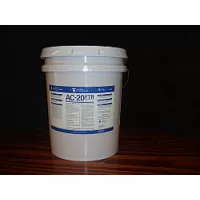Pecora 301 Non-Sag: 4.5 gallon
$482.00
- Reduces pavement deterioration by restricting surface water penetration into underlying base and sub base layers.
- Convenient one component, neutral moisture curing system.
- Ultra low modulus resulting in high movement capability.
- Ease of application with standard automated bulk dispensing equipment such as Graco or Pyles.
- VOC compliant.
- Primerless adhesion to concrete and asphalt.
- Aids in elimination of non-compressible entering expansion joints.
- See Technical Data Sheet for Coverage Chart
Pecora 301 Non-Sag: 4.5 gallon
Pecora 301 Non-Sag Silicone Pavement Sealant is a one part, ultra low modulus product designed for sealing joints in concrete or asphalt pavement. It has excellent unprimed adhesion to concrete, metal and asphalt substrates, superior weather resistance and remains flexible at extremely low temperatures. Pecora 301 NS Silicone Pavement Sealant is a non-sag product designed for applications on flat and sloped surfaces.
Surface Preparation
New or old concrete surface must be dry and free of dust, laitance,
grease, oils, curing compounds, water repellents, waxes, foreign
particles, and disintegrated substrate. Restoration work requires saw cutting and sandblasting, followed by blowing out with compressed air (moisture and oil-free). Joint area should be free of all dust and foreign debris before back-up
material is installed. Priming may be required. P-225 / concrete or P-200 / asphalt. Proper adhesion should be confirmed prior to full scale production.
Joint Backing
Backer rod should be used to control the sealant depth and cushion it from impact. Closed cell polyethylene is recommended. Use a size that
will compress a minimum of 25% when inserted into the joint.
Application
Ideal surface temperature should be 60°F(16°C) – 85°F(29°C). Sealant should be applied to the prepared joint in a continuous operation. Tool the sealant slightly concave using dry-tooling techniques. Sealant must be recessed below traffic surface.
Initial Skin
Approximately 60 minutes at 77°F (25°C), 50% R.H. Higher temperatures and/or humidity will shorten this time period.
Finish your job with Pecora:
300SL 5 Gallon
Pecora Dynatrol II
Cleaning
Immediately remove all excess sealant and smears adjacent to joints with mineral spirits. For equipment cleanup, also use mineral spirits. Consult
manufacturer’s MSDS for handling and safety precautions.
Precautions
Use with adequate ventilation or wear an appropriate NIOSH-approved respirator. Contact with uncured sealant or with vapors generated during
curing may cause respiratory tract irritation. Contact with skin or eyes may cause irritation or allergic reaction. Avoid contact and wash thoroughly after handling. May be harmful if swallowed. Refer to Safety Data Sheets (SDS) for more information.
| Weight | 51 lbs |
|---|---|
| Dimensions | 15 × 15 × 15 in |
| Color | Limestone, Pavement Gray |
Related products
Control Joints
Air and Vapor Barrier
Concrete
















